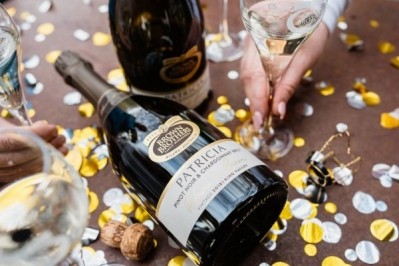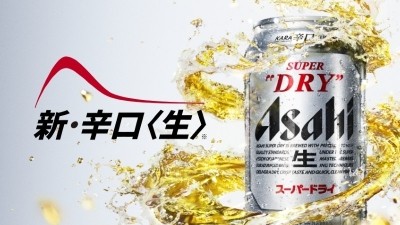Alcohol tales: How storytelling is driving China market trends

This involves the strategic use of narratives to engage and connect with consumers on an emotional level.
It includes crafting a compelling narrative that highlights a brand’s values and heritage, going beyond simply promoting a product.
By creating a narrative that resonates with consumers, storytelling allows brands to differentiate themselves, build loyalty and sway purchasing decisions, said Subramania Bhatt, CEO and founder of the China Trading Desk.
Storytelling can therefore be used in response to trend drivers to create strong marketing strategies.
A recent survey conducted by the China Trading Desk revealed key trends driving consumer behaviour in the alcohol space. The study, “Chinese alcohol consumption survey”, was completed this year.
Shifting consumer preferences
While sustainability and health are growing concerns, the price and quality of alcohol remain top considerations.
“Chinese consumers today are more willing to pay a premium for sustainability up to a point, but price sensitivity is a big factor. Ultimately, price, followed by quality, and then brand, influence purchasing decisions,” Bhatt said.
The survey revealed that 76% of alcohol purchases are made through supermarkets and online platforms, where consumers are likely to compare prices. This points to the importance of competitive pricing.
While storytelling and brand loyalty can tip the scales in favour of one product over another, Bhatt pointed out that negative feedback on social media platforms like WeChat and Douyin can significantly affect a brand's reputation.
“The speed of social media makes it easy for consumers to access product reviews, and a bad experience can spread quickly. This underscores the need for strong storytelling and engagement,” said Bhatt.
Social and experiential consumption
On a related note, experiential offerings are becoming a significant driver in the post-COVID era. Brands that can provide a unique experience in a special setting will likely stand out to Chinese consumers, said Bhatt.
The survey highlighted that alcohol consumption is often linked to social occasions, with 82.9% of respondents drinking in social settings, 57.4% during meals, and 42.5% during celebrations.
Furthermore, 37.2% of alcohol consumption occurs at home, with restaurants accounting for 39.4%.
These statistics suggest a continued opportunity for alcohol brands to tap into experiential offerings, such as collaborations with restaurants or celebrities, a trend Bhatt noted as rising in importance.
These create immersive, context-rich experiences where consumers associate the product with a particular atmosphere or lifestyle.
Such experiences could also involve incorporating local flavours or ingredients.
Taste and brand preferences
Taste remains a significant driver of alcohol consumption.
Whiskey brands like Chivas Regal, The Macallan, and Glenlivet are top choices for Chinese consumers. Bhatt also highlighted that flavoured spirits are gaining traction among the younger generation.
In China's alcohol market, Bhatt noted the success of locally flavoured alcohol, like mandarin orange-infused spirits, which have gained popularity due to their ability to resonate with local tastes while offering something new and authentic.
“Such flavoured options offer a more approachable way to consume alcohol, especially to those who don’t normally drink. Besides, better taste is always the top factor influencing purchase decisions,” said Bhatt.
However, there is a balance to strike between innovation and maintaining authenticity.
Some argue that adding flavours detracts from the premium quality of a product, but Bhatt disagrees.
“I don’t think adding flavours reduces the quality. It’s just a different product.
“You can still have your authentic product and also cater to a broader audience with flavoured versions. It’s about creating different segments without diluting the quality,” said Bhatt.
On capturing the various market segments, brands also need to ensure a strong digital presence.
Purchasing habits
“We see digital platforms becoming critical touchpoints for alcohol purchases, especially as more consumers turn to these platforms to discover and explore new products,” Bhatt said.
In China, Douyin, Xiaohongshu, and WeChat are the top three platforms for product research.
Interestingly, while 70% of Chinese consumers research alcohol products online before making a purchase, they place significant weight on product reviews over price comparisons. This underscores the power of social media in shaping consumer decisions.
And one common narrative that keeps appearing is health and wellness.
Younger consumers are increasingly seeking healthier, lower-alcohol alternatives.
Moderate drinking and responsible consumption are becoming more important. Brands need to adapt their messaging and product offerings to align with these evolving health-conscious preferences, said Bhatt.
Looking ahead
The survey gave a brief overview of the current alcohol landscape, and showed that beer remains the most popular alcoholic beverage, preferred by 80.5% of consumers, followed by wine at 55.3%, reflecting a social and cultural inclination toward these drinks.
Baijiu, accounting for nearly 50% of the "Other" category (chosen by 15.4%), highlights a strong cultural affinity for traditional Chinese spirits.
Additionally, cocktails, making up 18% of the "Other" category, signal a growing trend towards mixed drinks, possibly fuelled by the increasing popularity of cocktail culture and bars.
When asked about the possibility of low-alcohol beverages overtaking stronger liquors in China, Bhatt expressed doubt about a major shift in the short term.
Younger generations, particularly the Gen Z, currently prefer lower alcohol content and more social drinks.
However, he noted that older consumers, especially those over 40, continue to favour stronger spirits like whiskey and Baijiu. Looking further ahead, Bhatt mentioned the potential for preferences to evolve as younger generations age, suggesting that they might eventually turn to more premium, high-alcohol beverages.
Over the next five to ten years, significant changes are not anticipated, said Bhatt.
For brands looking to make their mark, telling a compelling story both online and offline is becoming the ultimate differentiator.
“The product’s quality matters, but in today’s market, it’s the story that will keep customers coming back,” said Bhatt.











